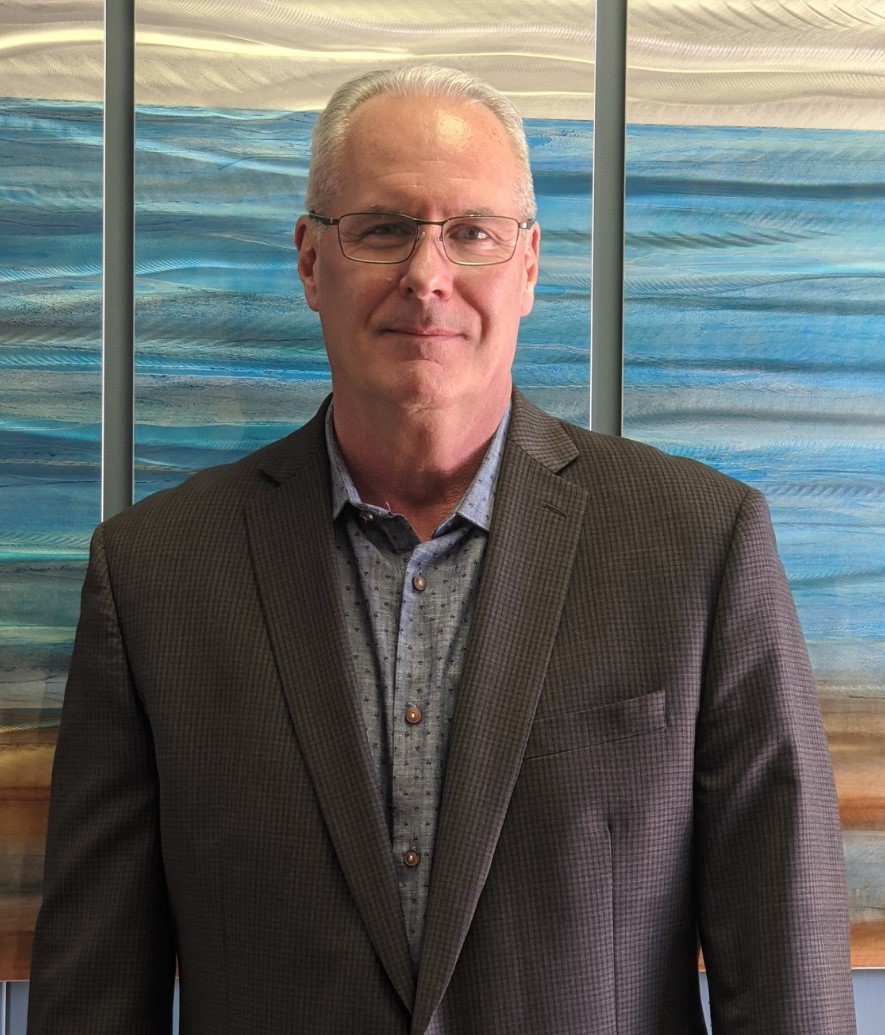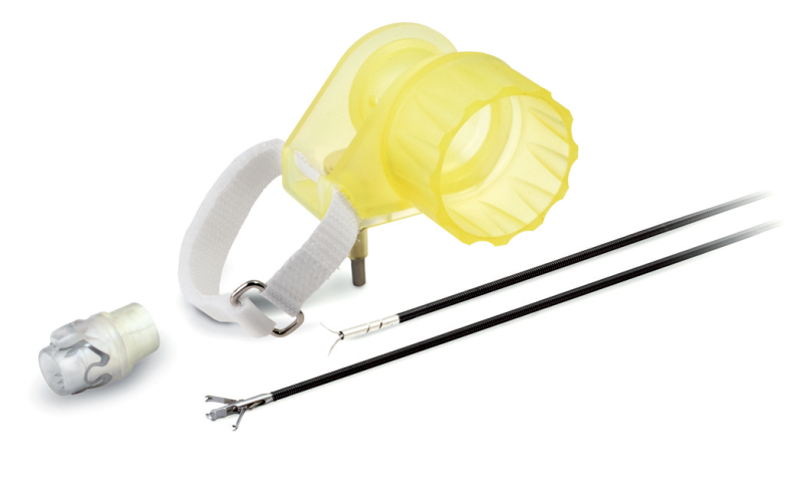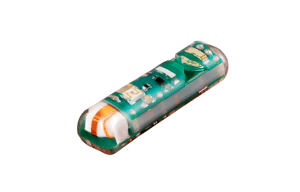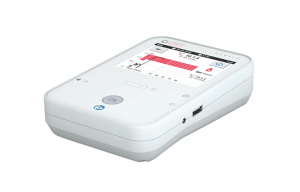
Ovesco Endoscopy USA Growing Sales, Preparing to Manufacture in Cary

If you have the stomach for it, you can watch dozens of videos on Ovesco Endoscopy’s website showing the company’s medical instruments in action, as gastroenterologists deftly manipulate them to fix or prevent various problems inside the gastrointestinal tract.
The medical-procedure videos are a big part of the company’s commitment to training clinicians how to use the wide array of endoscopy tools it develops and sells. So are on-site training sessions offered at the company’s training lab in Cary, where doctors can practice endoscopic procedures on porcine tissue models that simulate working within the human body’s GI tract.
“Training is a cornerstone of our company,” says Geoffrey Yates, president of Ovesco Endoscopy USA and chief commercialization officer for the Americas. “Very detailed, in-person, hands-on training.”
The company’s devices fit through, or on, endoscopes, the tubular diagnostic instruments that can be snaked into hollow organs, like those of the GI tract, allowing doctors to see and solve problems without performing invasive surgery.
“When our devices are used, it keeps you out of the operating room,” Yates says.
Sold on North Carolina
Ovesco’s U.S. operation, founded in 2010, is a wholly owned subsidiary of Ovesco Endoscopy AG, a private equity-backed company based in Tuebingen, Germany.

Yates relocated Ovesco’s U.S. operations to Cary from California’s Silicon Valley in 2015 because North Carolina’s Research Triangle region was affordable, three time zones closer to the company’s European office, and offered a talented labor pool, a moderate climate and a high quality of life.
“Raleigh-Durham-Chapel Hill and the whole Triangle area is growing rapidly,” he says. “A lot of European companies have put their U.S. headquarters here.”
It was an easy decision for Yates, who knew the state well from having worked previously in Charlotte for five years as a sales representative for another company in the late 1980s and early 1990s.
“I liked the Carolinas,” he says. “North Carolina is a business-friendly state, taxation is relatively low. When you’ve been based in California, everything still seems inexpensive here.
“My whole objective is to get our brand out there and let people know we’ve made the conscious decision to stay here in North Carolina. Virginia tried to lure us away, but I like Cary, and I like the company being based here.”
Manufacturing to come
Yates spent his first years with Ovesco building a commercial and clinical support organization and enlisting distributors throughout Latin America. The company employs about 20 people, five of them based in Cary.

Now Yates is preparing to add product manufacturing to the Cary operation. He is searching for a suitable facility to lease, buy or build.
“We’d love to be up and running sometime next year,” he says.
Being able to manufacture the company’s products in Cary will reduce production costs, freeing up cash to hire more direct representatives.
“Wherever we have direct commercial and clinical representation, we do so much better than through an independent agent,” Yates explains. “When you’ve got that 100 percent dedication and focus, it really pays off. We need more of this. The U.S. is a big country to cover.”
Manufacturing will initially require three or four new employees, and more will be added later as the company ramps up and expands its production capabilities.
“We’re going to bring one product platform over and get it running, and build from there,” Yates says.
An expanding product line
The first device to be manufactured in Cary will be the company’s leading product, an Over the Scope Clip (OTSC) System that is used to close perforations and stop bleeding throughout the GI tract, from the esophagus to the stomach to the colon.
“It’s in the tool box of every therapeutic endoscopy suite in the country,” Yates says. “It’s been a major, major success. It’s a bailout device. Virtually every time it’s used it’s keeping someone out of the operating room. In fact, all our technologies do that.”
The OTSC System has captured about 95% or more of market share, and the product’s utility is documented in more than 400 clinical publications.
“We’re so well documented because it works,” Yates says. “Our value proposition starts with us clinically. We’re a very clinically motivated and driven company. We’re driven by data and outcomes.”
The company’s StentFix OTSC System can also be used for stent fixation, a company-developed procedure for anchoring esophageal stents in place so they don’t migrate as the esophagus flexes.
“It has been a resounding success,” Yates says. “We are stressing Germany with demand right now because it’s been such an unmet market need for so long, and esophageal stents are used very liberally in the U.S. and are expensive.”
Another major product platform is the Full Thickness Resection Device (FTRD) System used to cut tissue in its entirety in the stomach, colon and duodenum.
“In the colon for example, you can resect full thickness -- all layers of the bowel wall -- up to 3 centimeters in diameter,” Yates says. “Every one of those procedures is an alternative to surgery, keeping someone out of the operating room.”
The FTRD System can be used to resect lesions throughout the GI tract that are suspicious or potentially dangerous, he says.
When one of the company’s OTSC or FTRD clips needs to be taken out of the GI tract, Ovesco has a system called Remove that cuts and extracts it.


Two other devices, the Bariatric Anastomotic Reduction System (BARS) and HemoPill, will be new additions to the company’s portfolio in the future.
BARS is a clip-and-cap system for narrowing the opening to the stomach in patients who’ve had bariatric surgery and then experience weight gain.
“That’s a big deal,” Yates says. “There’s a lot of bariatric surgery in the U.S.”
The system is nearing commercial sale in Europe and is undergoing final design tweaks before regulatory submission to the FDA.
HemoPill is Ovesco’s first diagnostic product. It is a capsule that contains a small sensor. When swallowed the HemoPill can detect bleeding in the GI tract and wirelessly transmit data to a small receiver outside the body.
“If there’s no bleeding, you don’t have to call a gastroenterologist at 3 in the morning or go to the expense of scoping that patient,” Yates says. “There’s an interesting economic argument here that we’re excited about, but also upper GI bleeding can be deadly, so having a tool that can identify bleeding that quickly is a really interesting and compelling technology.”
Growing sales
Ovesco’s products are used to treat patients in more than 70 countries worldwide. They are targeted to therapeutic endoscopists, specialized gastroenterologists who have gone on to thre- or four-year advanced fellowships “and are very skilled at what they do,” Yates says.
Of the nation’s estimated 10,000 gastroenterologists, about 700 to 800 are therapeutic endoscopists, those who use endoscopes to perform advanced therapeutic procedures.
Ovesco’s endoscopy instruments can help them stop bleeding, close lesions and fistulas, remove polyps, retrieve foreign bodies, anchor stents and perform other procedures in the GI tract.
Although the company doesn’t disclose revenues, its expanding product lines are generating strong sales growth, even during the financially challenging COVID-19 pandemic.
“We actually grew our business (in 2020) over 2019,” Yates says. “I’d call that a major success. Like everyone else, we took a major hit in April and May, rebounded well, and this year we’re starting off fantastic.”
In each of the two years before COVID-19, revenues rose by 25 to 30 percent.
For 2021 the company is conservatively forecasting 15 percent growth, “and we’re crushing that number right now, so knock on wood,” Yates says.
